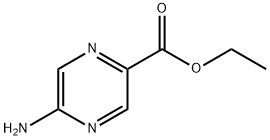Hello, I'd like to ask about titanium dioxide in Skittles. First, why is it added? What's the purpose? Also, how much titanium dioxide do Skittles typically contain compared to other foods that use it?
Next, are there differences in how much titanium dioxide countries allow in Skittles? Like, do some places have stricter rules?
Lastly, does the titanium dioxide in Skittles affect how they taste or look? Does it change the texture or quality at all?
The Role of Titanium Dioxide in Skittles: Aesthetic Enhancement and Consumer Perception
Related Products More >
-
- CNY Request For Quotation
-
- CNY Request For Quotation
-
- CNY Request For Quotation
-
- CNY Request For Quotation
-
- CNY Request For Quotation
-
- CNY Request For Quotation
-
- CNY Request For Quotation
-
- CNY Request For Quotation



 沪ICP备2021018848号-5
沪ICP备2021018848号-5

Visual Appeal:
The primary function of titanium dioxide in Skittles is to enhance their appearance. It provides a bright, opaque base for the candy's colors, making them more vibrant and visually appealing. This aesthetic quality is crucial for attracting consumers, especially children.
Texture and Mouthfeel:
Titanium dioxide contributes to the smooth, glossy coating of Skittles, which enhances their texture and mouthfeel. This coating helps create a satisfying crunch when the candy is bitten into, adding to the overall sensory experience.
Taste:
Titanium dioxide itself is tasteless and odorless, so it does not directly affect the flavor of Skittles. The taste of Skittles is primarily determined by their sugar content, flavorings, and citric acid.
Consumer Perception:
The use of titanium dioxide in Skittles has faced criticism due to health concerns, particularly in regions like the EU where it has been banned. Some consumers prefer to avoid foods containing TiO₂, leading manufacturers to explore alternative ingredients for achieving similar visual effects.
Titanium dioxide (TiO₂) is a common food additive used in Skittles as a whitening agent and for enhancing color brightness. It is widely utilized in candies, chocolates, and other processed foods to achieve vibrant, appealing colors. The compound is favored for its ability to scatter light, providing opacity and brightness.
In daily life, titanium dioxide is also found in cosmetics, sunscreens, paints, and coatings due to its UV-blocking properties and reflective nature. For example, it protects skin from harmful UV rays in sunscreen lotions. In industrial applications, TiO₂ serves as a pigment in white paint or as a coating material for self-cleaning glass.
However, concerns about the safety of titanium dioxide have emerged. While regulatory agencies like the FDA deem it safe in small amounts, recent studies suggest potential health risks if inhaled in nanoparticle form. Consumers should be mindful of excessive consumption of products containing TiO₂ and check labels for "E171," its food additive code.
To minimize risks, opt for natural or additive-free snacks and stay informed about updated safety guidelines. Moderation is key when consuming foods with synthetic additives like titanium dioxide.
Comparison of titanium dioxide amounts in Skittles with other foods: The amount of titanium dioxide in Skittles can vary compared to other foods. Some confectionery products might have similar levels if they aim for highly pigmented and bright appearances. However, in products like certain cheeses or processed meats where titanium dioxide might be used in small amounts for anti - caking or whitening purposes, the levels are typically much lower. For example, in some white cheeses, it's used minimally to maintain a uniform color, while Skittles rely on it more prominently for their distinct, colorful look.
Differences in international standards: In the European Union, there are restrictions on the use of titanium dioxide in food. It has been banned as a food additive in response to potential health concerns. In contrast, in the United States, the Food and Drug Administration (FDA) allows its use within certain limits in a variety of foods, including candies like Skittles. These limits are set to ensure safety while still allowing its use for aesthetic purposes.
Impact on taste and quality: Titanium dioxide itself is tasteless and odorless. So, it doesn't directly affect the taste of Skittles. However, it does contribute to the quality of the candy's appearance. By providing an opaque and bright color, it makes the Skittles more visually appealing, which in turn can enhance the overall consumer experience. It helps maintain the distinct look that consumers associate with the brand.